 Call center quality management (QM) is vital for excellent customer service. Clear quality assurance processes are essential to measure and ensure agent performance. Consequently, quality assurance capabilities are a key consideration for businesses when choosing a call center.
Call center quality management (QM) is vital for excellent customer service. Clear quality assurance processes are essential to measure and ensure agent performance. Consequently, quality assurance capabilities are a key consideration for businesses when choosing a call center.
In this blog, we will discuss the basics of call center quality management. We will explore its benefits and how to use built-in call center features to improve it. If you’re interested in quality management for call centers, this blog is your go-to guide.
Jump to ↓
- What is call center quality management?
- Why your call center need quality management?
- 6 Best practices for effective call center quality management
- How to choose quality management software for your call center?
- Quality assurance tools at your disposal
What is call center quality management?
Call center quality management(QM) encompasses the processes and strategies used to monitor, evaluate, and improve the quality of interactions between agents and customers. It involves various components, including quality assurance (QA), quality control (QC), and performance metrics, all aimed at ensuring that customer interactions meet established standards.
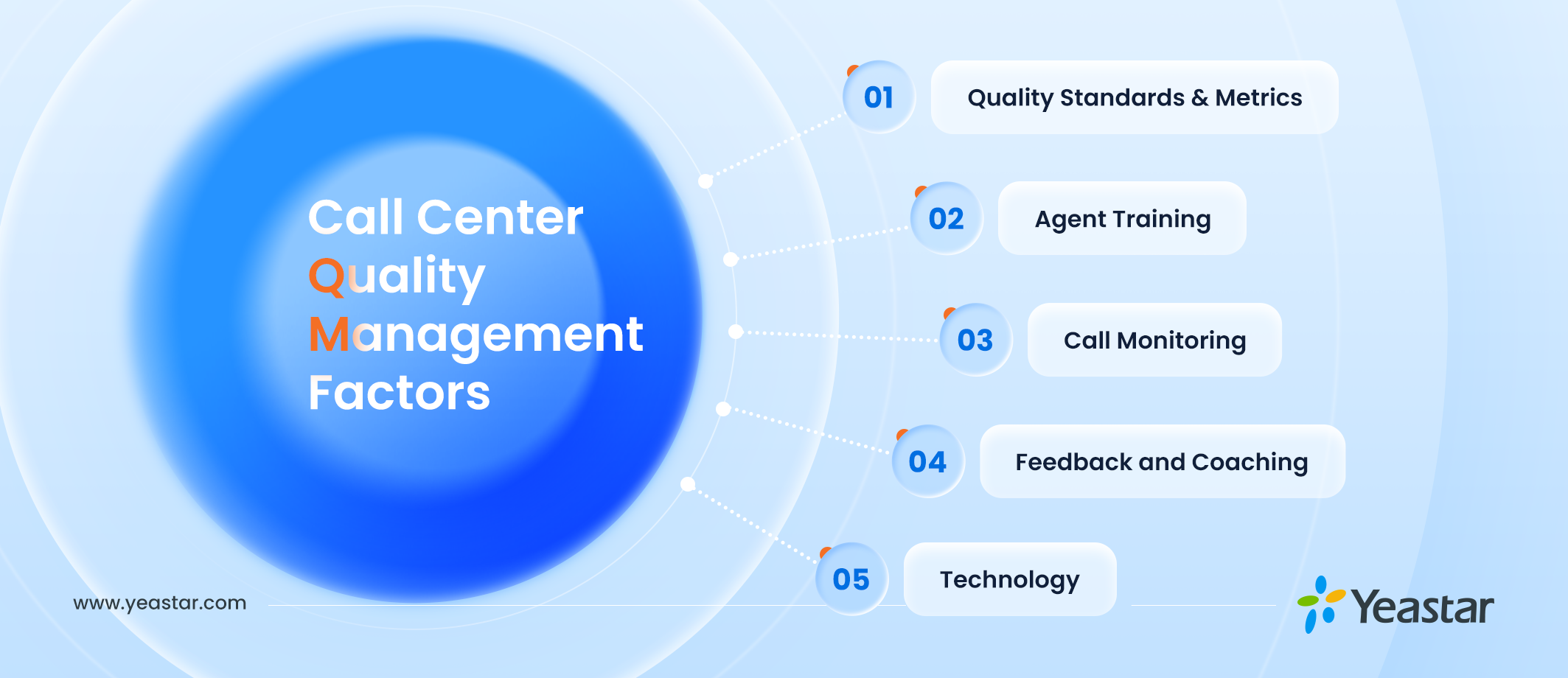
What are the differences among quality management, assurance, and control?
- Quality Management: A holistic approach that includes all activities aimed at improving service quality. For example, a company starts a program to improve customer satisfaction by training staff and upgrading equipment.
- Quality Assurance: Focuses on systematic processes to ensure that the service meets specific standards. For example, a software team follows a set testing process to make sure each software version meets quality standards.
- Quality Control: Involves the actual measurement of service quality through various metrics and feedback mechanisms. For example, a factory regularly checks and tests its products to ensure they meet quality requirements before shipping.
What are the benefits of call center quality management?
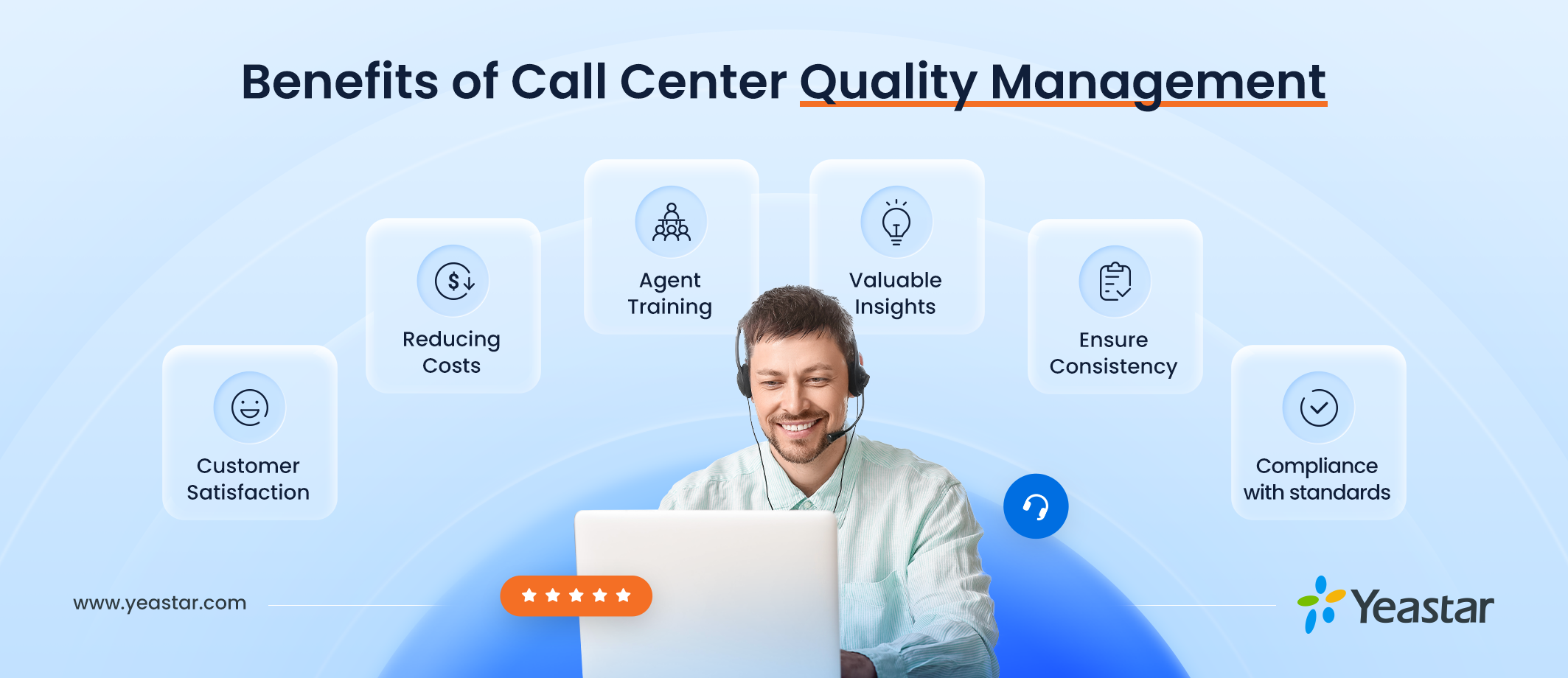
Enhanced Customer Satisfaction
Research conducted by Zendesk indicates that 84% of customers are more likely to remain loyal to companies that deliver exceptional customer service. And the core component of quality management is the emphasis on customer needs.
By actively seeking customer feedback and incorporating it into service delivery, you can tailor your offerings to better align with customer preferences. This approach fosters positive customer experiences, increases satisfaction rates, and ultimately enhances customer loyalty.
Coaching and Agent Skills Development
When you analyze customer interactions, you gain insights into customers’ mindsets and observe how your call center agents perform. For instance, admins can regularly review agent performance through recorded calls and provide additional training to drive improvement.
Quality assurance(QA) helps create a supportive work culture. Regular interactions between supervisors and agents foster a positive work environment and boost agent morale. When the customer service team is well-trained, the resolution rate of customer issues naturally increases, leading to higher customer satisfaction.
Compliance with Regulations
A robust Quality Management System(QMS) helps ensure adherence to industry regulations and standards, reducing the risk of non-compliance penalties. Regular audits and assessments within the QMS framework help identify potential risks early, allowing for proactive management.
Consistency in Service Delivery
As your call center grows, maintaining consistency can become more challenging. The QMS helps establish and uphold standards so that you can maintain high-quality standards across all interactions, regardless of the agent or situation. This consistency not only meets customer expectations but also builds trust and loyalty, as customers can receive the same level of service every time they engage with the company.
6 Best Practices for Effective Call Center Quality Management
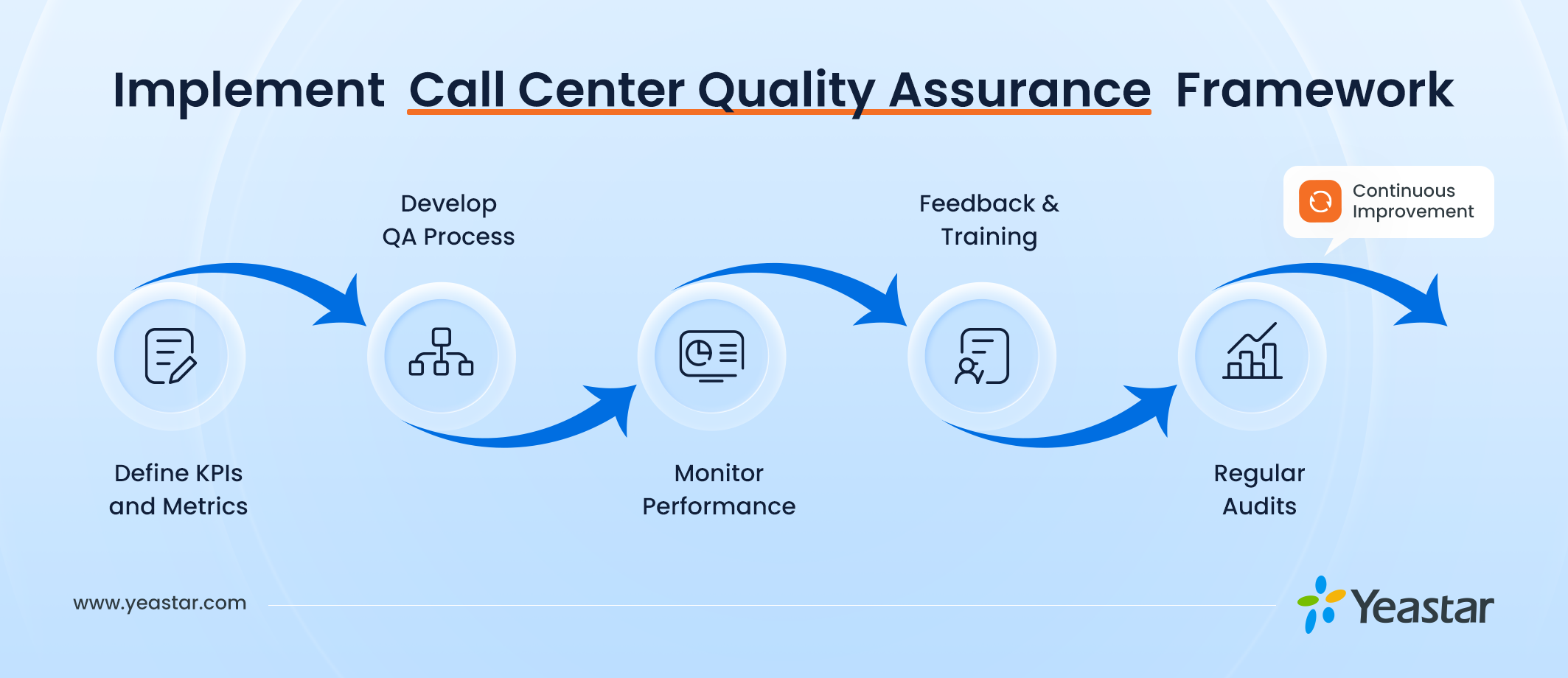
To enhance the effectiveness of quality management (QM) initiatives, consider the following best practices:
1. Establish Clear and Measurable Quality Standards
It is essential to define explicit quality standards for all customer interactions. This includes setting benchmarks for critical performance indicators such as call handling times, customer service protocols, and compliance with industry regulations.
By having well-documented standards, organizations can ensure that all team members have a clear understanding of expectations and can work towards achieving them.
2. Implement Comprehensive Training Programs
Customer Experience analytics focuses on understanding and improving the customer’s journey and satisfaction.
Regular training keeps agents updated on best practices, new products, and company policies. Regular training sessions not only enhance agents’ skills but also reinforce the importance of quality service delivery.
A commitment to continuous learning helps maintain high standards and equips agents to handle customer inquiries effectively.
3. Provide Real-Time Feedback
Offering immediate feedback based on agents’ performance is crucial for fostering improvement. Real-time feedback allows agents to make swift adjustments, enhancing service quality during interactions.
4. Encourage Agent Engagement and Recognition
Foster a culture of engagement by recognizing and rewarding high-performing agents. Recognizing and rewarding high-performing agents boosts morale and motivates them to excel. Engaged employees are more likely to take ownership of their roles, positively impacting the overall customer experience.
5. Solicit and Act on Customer Feedback
Regularly gather feedback from customers to identify areas for improvement. Use this input to refine quality standards and training programs. Responding to customer feedback shows a commitment to meeting their needs and helps build loyalty.
6. Utilize Specialized Software
The above steps are all aimed at building a robust quality management framework. Additionally, selecting specialized software is crucial for enhancing quality management in call centers. Quality management software provides a centralized platform for various tasks, including monitoring interactions, evaluating performance, and storing data for analysis. This not only increases efficiency but also enables supervisors to easily track agents’ progress and performance trends.
So, how to choose quality management software for your call center?
Choosing quality management software for your call center requires a thorough understanding of your specific needs and a careful evaluation of various options.
Start with identifying essential features like call recording, real-time monitoring, performance analytics, and reporting capabilities. Ensure the software integrates seamlessly with your existing systems, such as CRM and ERP, for a unified operation.
Scalability is crucial; the software must handle business growth without losing performance. It should also be easy to use, with a simple interface that makes it quick for managers and agents to learn and start using effectively.
Lastly, consider your budget and the total cost of ownership, ensuring the software offers good value for its price.
Quality Assurance Tools at Your Disposal
As mentioned above, implementing an effective QMS requires both right quality control framework and advanced quality management software. Yeastar perfectly meets the needs with it’s inbuilt call center solution.
We simplify quality management through automated workflows and visual dashboards, significantly reducing the time and costs associated with quality assurance tasks. Here are some key features and tools you might consider:
1. Advanced Call Recording
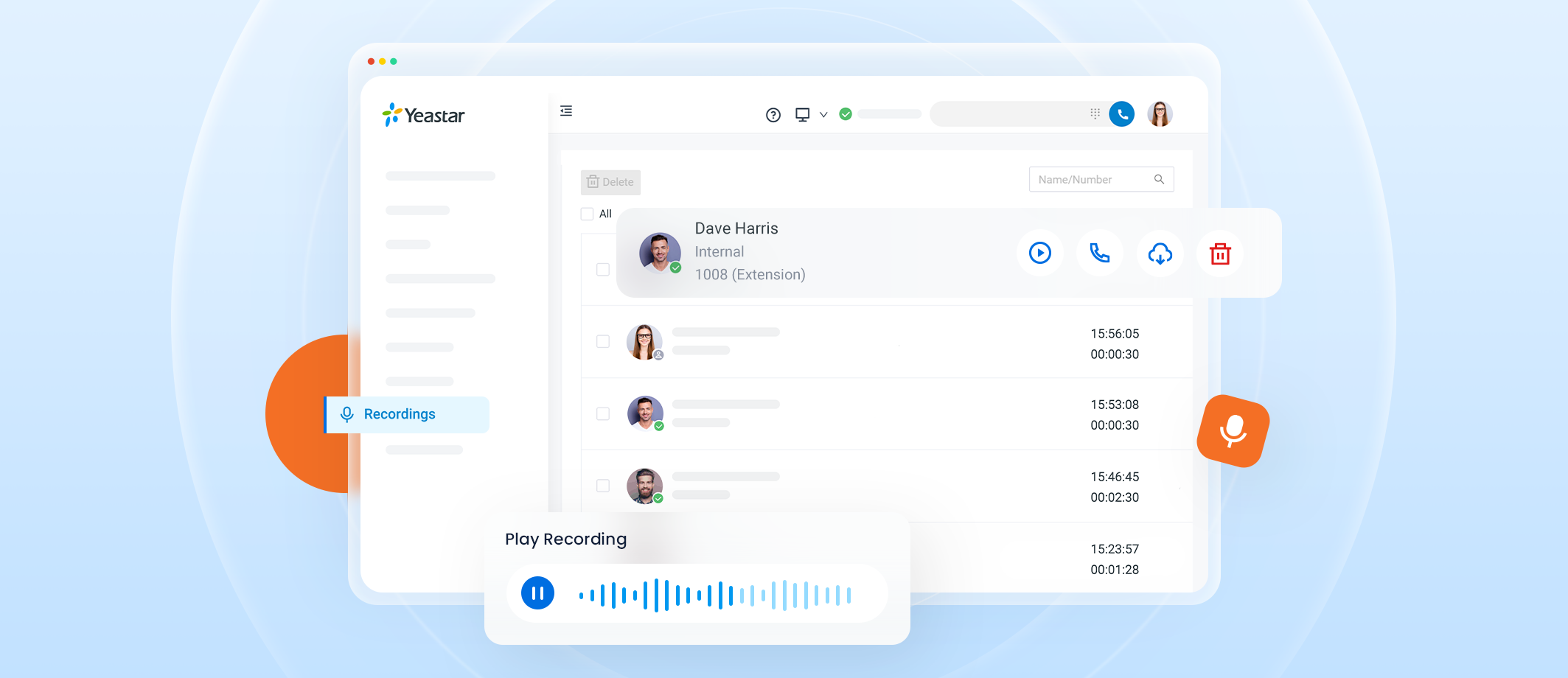
Call recording is a must in call center quality management. Yeastar’s call recording feature allows you to capture and review specific calls effortlessly via the pre-configured rules. This is crucial for evaluating agent performance and identifying areas for improvement. With Yeastar, you can:
- Record all calls automatically or on-demand.
- Start or pause recording without letting the other party aware.
- Store recordings securely for future reference.
- Easily search and retrieve specific recordings for analysis.
2. Real-Time Analytics and Reporting
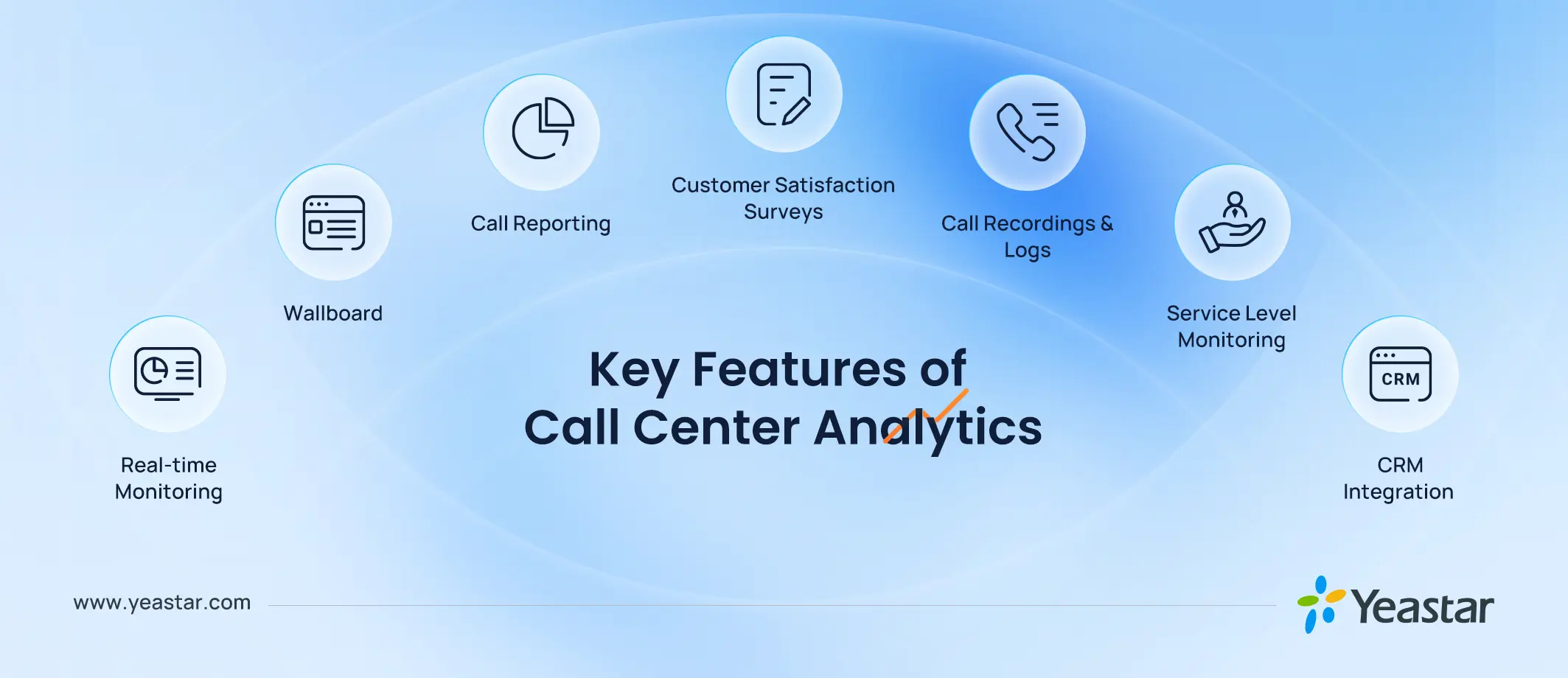
Yeastar provides powerful analytics and reporting tools that transform raw data into actionable insights. The analytics reveal patterns and trends, allowing you to intuitively track queue and agent performance, such as average waiting time, call volume, and more.
Additionally, there are dedicated Quality Assurance (QA) analytics to ensure interactions between agents and customers meet predefined quality standards. Metrics like Call Quality Scores, Compliance Scores, and Script Adherence are crucial for maintaining high service standards.
- Related reading: Why Call Center Analytics Matter? An Overview + 7 Key Features
3. Real-Time Wallbaord
Yeastar’s Wallboard offers 16 different metric widgets to display real-time call center metrics and KPI information. By visualizing SLA, call activities, and critical KPI completion rates, agents are motivated and can better understand their productivity, helping them exceed their goals. Immediate feedback allows agents to adjust and improve service quality on the spot, while efficient resource management ensures optimal call distribution during peak times.
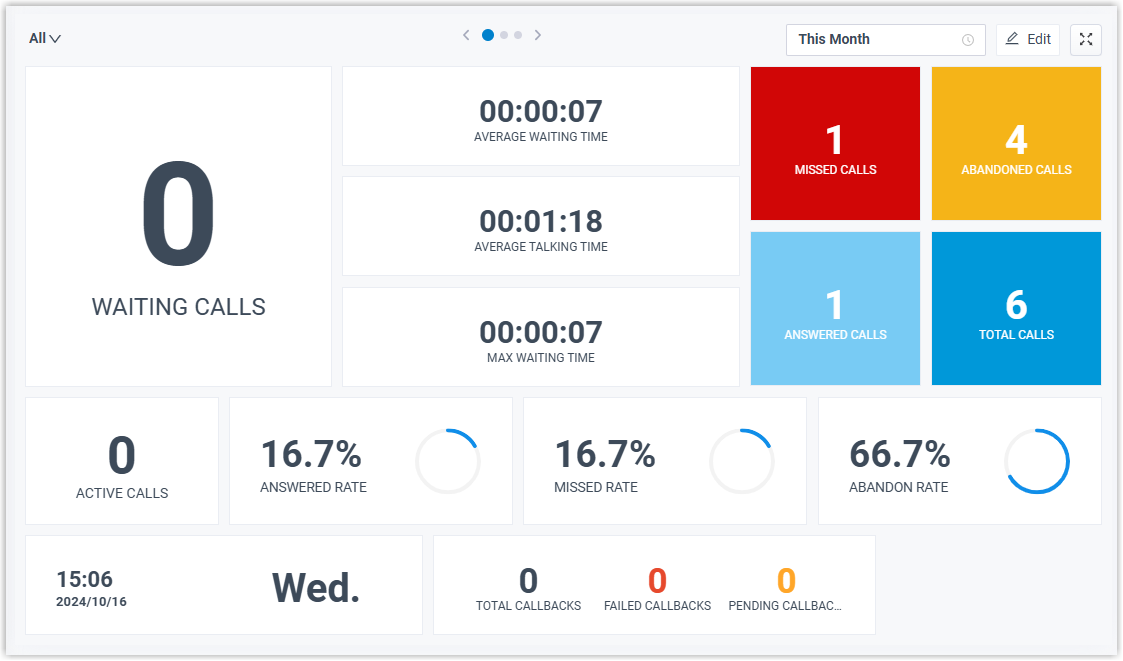
Yeastar Wallboard
Quality Management (QM) managers can customize the wallboard layout to display key data relevant to their goals, enhancing alignment and engagement within your teams.
- Related reading: Call Center Wallboard — 5 Benefits and Best Practices Guide
4. Agent Performance Management
Yeastar’s solutions include features specifically designed to improve agent performance. Supervisors can:
- Monitor live calls to provide immediate feedback.
- Use call whispering and barging to assist agents during calls.
- Schedule regular coaching sessions based on performance data.
- Access agent performance report to better measure their productivity.
5. Customer Feedback Integration
Integrating customer feedback into your QM process is essential for continuous improvement. Yeastar allows you to collect and analyze customer feedback through post-call surveys and other channels. This helps you understand customer needs and expectations better.
New to Yeastar Call Center Solution?
Quality management is just the starting point. Yeastar’s call center software is a comprehensive performance management solution that supports every facet of your contact center operations.
As built-in features of Yeastar P-Series Phone System, Yeastar call center solution surpasses traditional voice routing and management to offer omnichannel messaging support. Watch the video for a brief solution overview. You can also apply a 30-day free trial to kick-start immediately.
